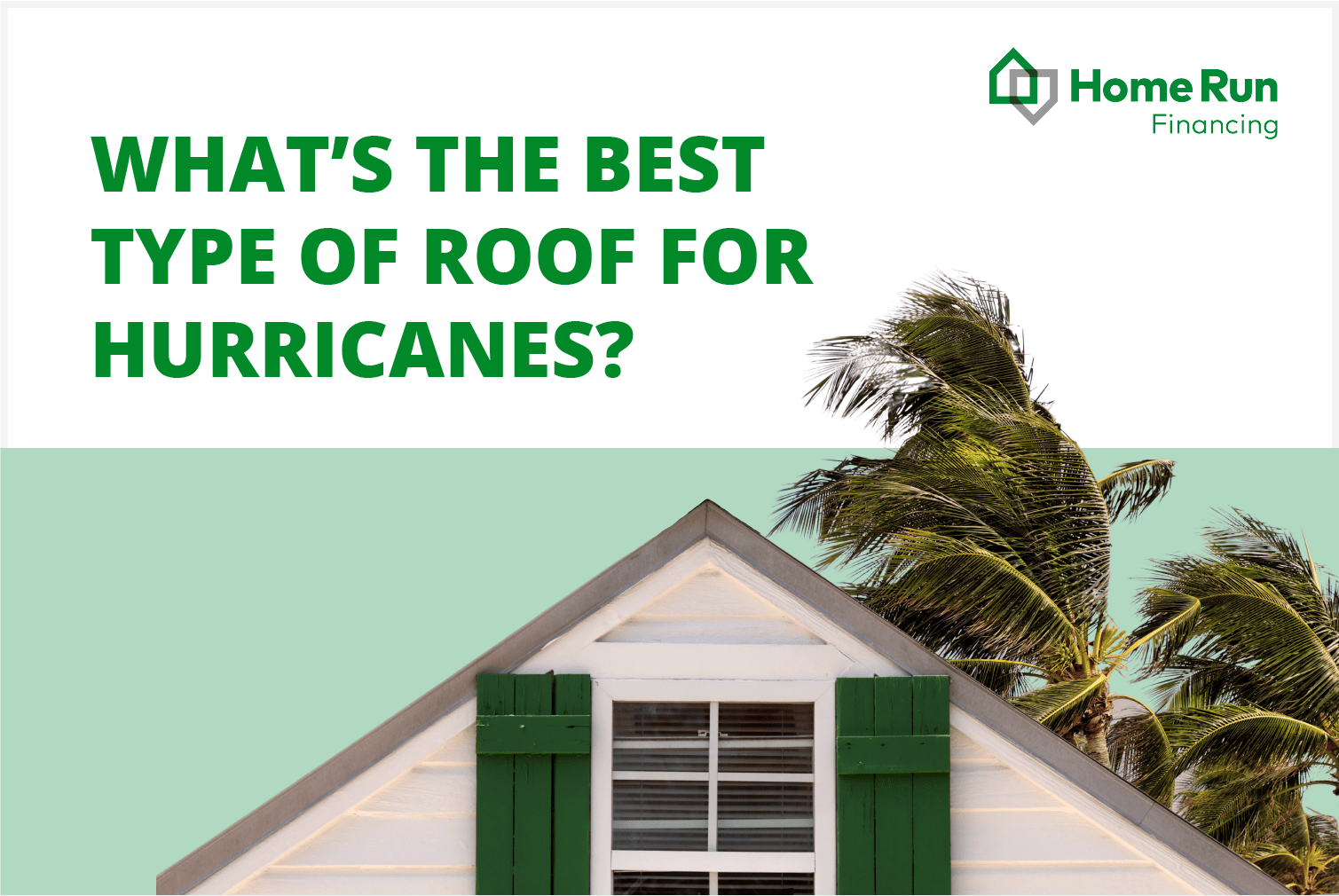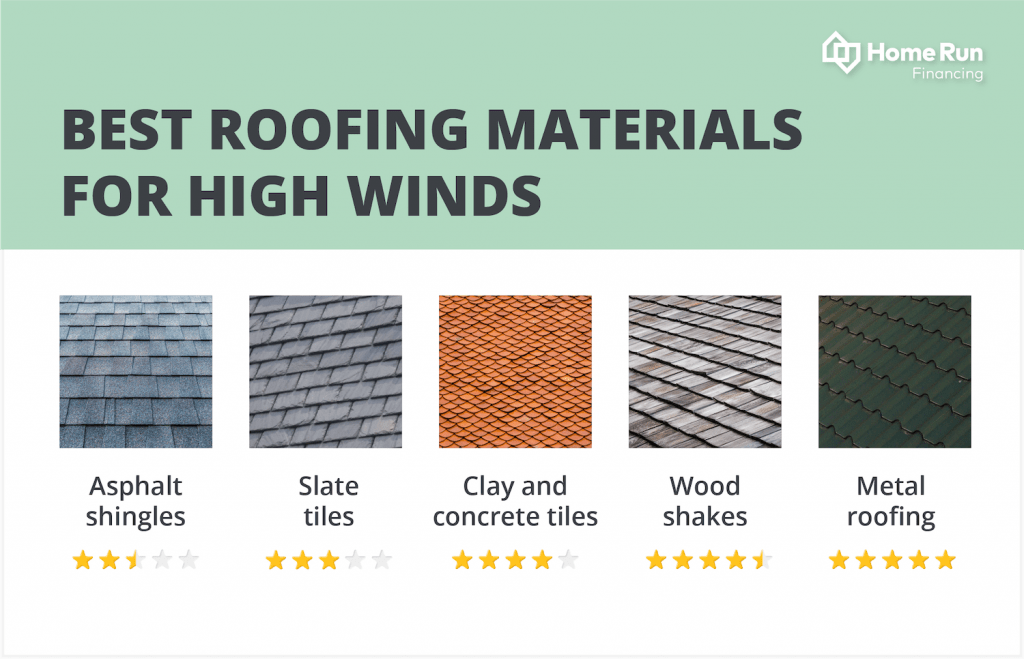
What’s the Best Type of Roof for Hurricanes and High Winds?
Homeowners in Florida know hurricanes bring damaging winds, but many Floridians don’t even bat an eye when a hurricane is forming in the Gulf or the Atlantic — they know how to prepare. Emergency boxes filled with candles, batteries, canned goods and water are stocked up and within easy reach. They put the lawn furniture in the garage and tape or cover the windows.
But how often do you consider the most important part of the house, the roof? The roof of your home protects everything you love. After a major hurricane (or several), roofs all over the affected area often have bright blue tarps stapled down for months, or even years, as roofing companies scramble to get them all fixed.
The good news is that you can prepare for the worst in advance. When the time comes to replace your roof, consider using the best roofing material for high winds. And don’t forget other factors, like the best roof shape for hurricanes. You can learn more about those topics below, including how to make a new hurricane-proof roof affordable with PACE financing in Florida.
Best roofing materials for high winds
One of the most commonly featured scenes in hurricane video footage is that of a roof being picked up, shingle by shingle, and carried away by extreme winds. You may be able to avoid that misfortune by simply using more wind-resistant materials for your roof. Knowing what the best roof material is for Florida and other states frequented by hurricanes can help you make better choices for your home.
Metal roofing
Metal roofs might not be the most attractive choice to some homeowners, but it’s the safest, most secure option available. Living in a hurricane-prone area like Florida requires being prepared for high winds. A metal roof can weather hurricane-force winds up to 160 mph, making it the most wind-resistant solution.
Metal roofing systems are pricier than cheap shingles, but they last longer and are more durable than any other types of roofing.
Clay and concrete tiles
Clay or concrete tiles are the most visually pleasing option for many homeowners. Tiles come in a variety of custom colors and match the architecture typical to Florida, which makes them a popular choice for upscale homes.
Curved tiles are arguably the most attractive option and are reasonably good at withstanding wind, with resistance up to around 130 mph, which is a pretty bad storm. Wind speeds in Florida regularly exceed 130 mph, though, so concrete or clay tiles are not the best or safest choice. They’re also some of the more expensive roofing materials on the market.
Slate tiles
Slate tiles are a more eco-friendly option, which appeals to many homeowners. They’re usually heavier than other options and cost a great deal more, despite their average wind speed resistance being quite a bit lower — around 110 mph — and the tiles can cause a lot of damage if they come loose. Quality workmanship is critical for a slate roof.
The biggest advantage to slate roofing, aside from natural beauty, is longevity. Slate roofs often come with 50-year warranties and are made from such high-quality material that they can last up to 100 years with proper maintenance.
Asphalt shingles
Asphalt shingles are a common choice because they’re less expensive than other roofing materials. They’re not designed to withstand winds higher than 110 mph, though, and the older, recycled or reclaimed asphalt shingles only have a wind resistance of 50 mph. They’re not the best type of roof for hurricanes, especially for Florida homes.
Saving money on the initial roofing might not be a great idea if you have to redo it more often. Realistically, the typical life span of asphalt shingles in Florida’s harsh weather and frequent hurricane conditions is only up to 15 years. Some homeowners opt to install further reinforcements to their asphalt roof, but this can be a costly option, even compared to metal roofing — especially if it’s being retroactively fitted to conform to newer safety standards. PACE financing options give you the means to do better.
Wood shakes
Wood shakes are rustic wooden shingles made from split logs. They’re more wind-resistant than clay, concrete or slate tiles, but not as much as metal. They’re a more expensive option than asphalt shingles and can be quite costly if you opt for traditional, handmade shakes.
Wood shake roofs tend to need a lot more general maintenance than other roofing materials. Some communities don’t allow wood shingles or shakes because they don’t meet stringent Class A fire ratings. The most compelling reason for choosing a wood roof is the beauty of natural wood.
Contact Home Run Financing to learn more about how you can finance your new roof, even with bad credit.

Other considerations for a hurricane-proof roof
The best roof material for Florida isn’t the only thing to think about when ensuring your roof is hurricane-proof. Installing hurricane straps or other roof reinforcements isn’t just a good idea; it’s mandatory for new Florida homes. When choosing your new roof, remember to think about the following:
- Shape of the roof. Certain building shapes and roof designs are better at resisting high winds and hurricanes than others. Ideally, the home would have an octagonal or hexagonal floor plan, although a square floor plan is also a safe option. The best roof shape for high winds will have multiple panels (such as a hip roof with four slopes) to reduce wind loads.
- Pitch of the roof. The pitch, or slope, of the roof will also affect your roof’s ability to stay put in high winds. Slopes of 30 degrees tend to have the best resistance against lifting off in hurricanes.
- Type of straps and fasteners. Florida mandated hurricane ties for all new builds after Hurricane Andrew in 1992. If your building is older than that, you can retroactively fit hurricane straps to your home for approximately $1,000 – $1,500, depending on your home size and particular roofing needs. Most hurricane fasteners are made out of galvanized or stainless steel, and they’re designed to hold your roof onto your walls or house foundations in the case of strong winds causing uplift.
- Length of roof overhang. Upforce winds can cause serious damage if you have roof overhangs. Any overhangs should be limited to less than 20 inches to reduce uplift.
- Pressure points. Some areas, such as the ridge of a roof, corners and eaves, are subject to higher wind pressures and need extra attention when it comes to fastening them down in expectation of high winds.
- Points of entry. Any point of entry should be considered a weak area that needs extra reinforcement. Doors, windows, garage doors and vents should all have extra protection available for hurricane season. Shutters or other strengthening features can be added to reduce wind flow through and uplift.
Living somewhere like Florida, you’ve got to expect high winds in the hurricane season. From the beginning of June until the end of November, you could be caught up in a massive hurricane at short notice. That leaves the rest of the year to prepare for it and make sure you have the best type of roof for hurricanes before one happens.
Make your Florida home safer with a wind-resistant roof
Paying more upfront for a quality roof ultimately saves you money, time and headaches: It lasts four to five times as long as a cheap roof and also requires less maintenance. You won’t find yourself repairing roof leaks and the damage they cause, such as replacing shingles or sweeping grit off your driveway after a hailstorm. The roofing materials you choose also affect your home value and serve as a powerful selling point.
Your home, its contents and your family are safer with a high-quality roof. And you don’t have to let cost stand in the way of getting one. Home Run Financing in Florida makes it easy to tap into your home equity and get the hurricane-proof roof you need to ensure your peace of mind. PACE is the best way to finance home improvements.
Find out more about PACE roof financing today — before the next expensive natural disaster.
